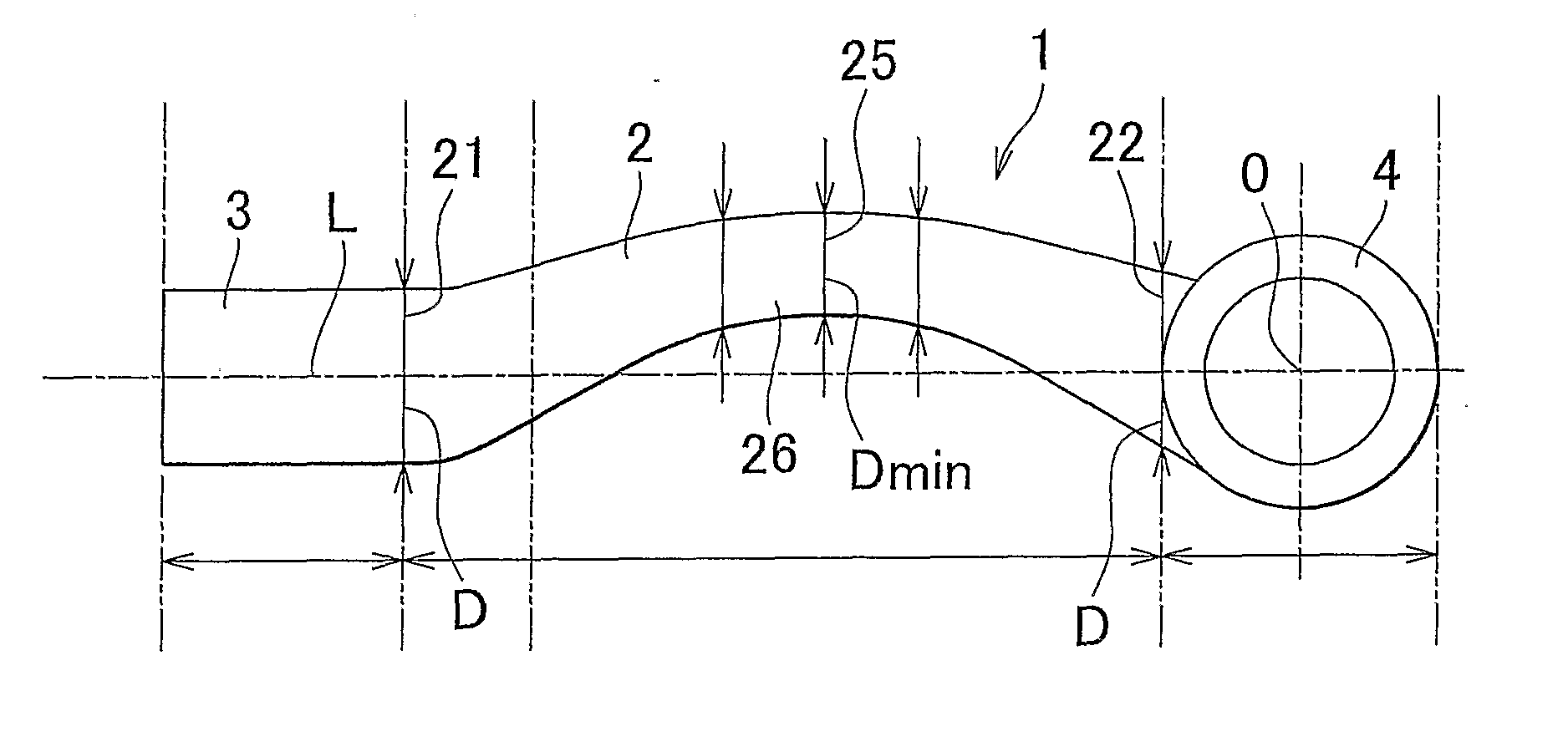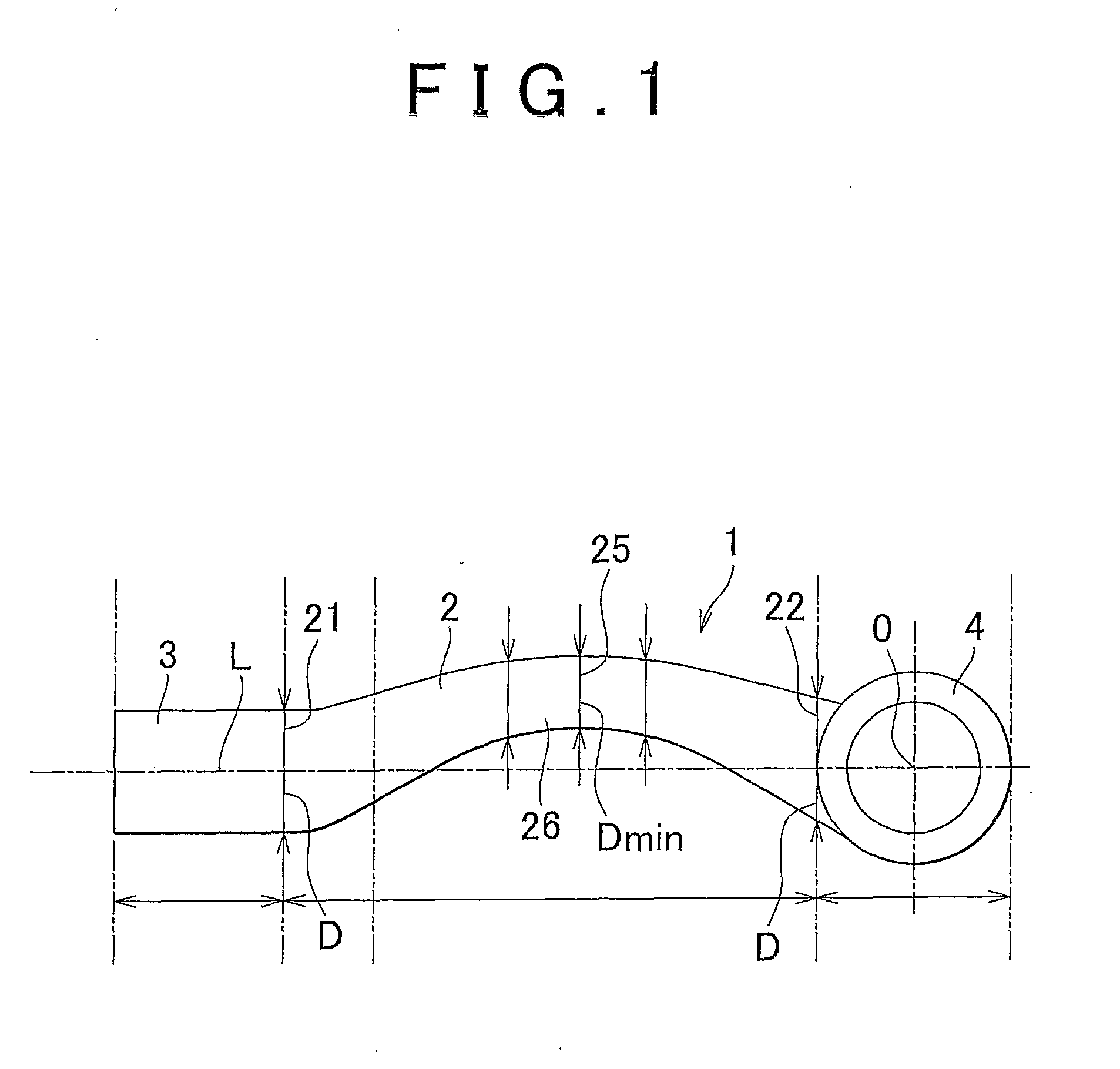Steering tie rod end made of steel and method of manufacturing the same
a technology of steel and tie rod end, which is applied in the direction of manufacturing tools, heat treatment equipment, furniture, etc., can solve the problems of reducing the strength of each tie rod end, affecting the service life of the tie rod end, so as to achieve the effect of low strength and easy machin
- Summary
- Abstract
- Description
- Claims
- Application Information
AI Technical Summary
Benefits of technology
Problems solved by technology
Method used
Image
Examples
Embodiment Construction
[0030]Hereinafter, a steel tie rod end and a method of manufacturing the steel tie rod end according to an embodiment of the invention will be described.
[0031]A steel tie rod end according to the embodiment of the invention includes a shaft portion; a first fitting portion that is continuous with a first end portion of the shaft portion in a longitudinal direction of the shaft portion; and a second fitting portion that is continuous with a second end portion of the shaft portion in the longitudinal direction of the shaft portion, wherein the shaft portion has a minimum area portion that is located between the first end portion and the second end portion, and a radially cross-sectional area of the minimum area portion is 80% or below of a radially cross-sectional area of the first end portion and 80% or below of a radially cross-sectional area of the second end portion, a martensite fraction of a steel structure of the minimum area portion is 90% or above, a surface hardness of the m...
PUM
| Property | Measurement | Unit |
|---|---|---|
| axial length | aaaaa | aaaaa |
| diameter | aaaaa | aaaaa |
| diameter | aaaaa | aaaaa |
Abstract
Description
Claims
Application Information
 Login to View More
Login to View More - R&D
- Intellectual Property
- Life Sciences
- Materials
- Tech Scout
- Unparalleled Data Quality
- Higher Quality Content
- 60% Fewer Hallucinations
Browse by: Latest US Patents, China's latest patents, Technical Efficacy Thesaurus, Application Domain, Technology Topic, Popular Technical Reports.
© 2025 PatSnap. All rights reserved.Legal|Privacy policy|Modern Slavery Act Transparency Statement|Sitemap|About US| Contact US: help@patsnap.com


